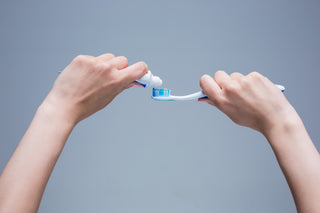Introduction
Toothpaste is a staple in our daily oral hygiene routine, but have you ever wondered how it all began? In this blog, we'll take a journey through the history of toothpaste, exploring its ancient origins and the innovations that have shaped the products we use today.
Ancient Origins
Toothpaste as we know it has come a long way. Ancient civilizations used a variety of substances to clean their teeth:
- Egyptians (circa 5000 BC): Used a mixture of powdered ashes from ox hooves, myrrh, and pumice.
- Greeks and Romans (circa 500 BC - 300 AD): Added crushed bones and oyster shells to their pastes for abrasive qualities.
- Chinese and Indian Cultures: Used herbal mints, salt, and ginseng to freshen breath and clean teeth.
19th Century: The Birth of Modern Toothpaste
The 1800s saw significant advancements in toothpaste development:
- Early 1800s: Tooth powders, made from chalk and soap, became popular.
- 1850s: A dentist named Dr. Washington Sheffield introduced toothpaste in a jar.
- 1890s: Colgate began mass-producing toothpaste in a collapsible tube, making it more convenient and hygienic.
20th Century Innovations
The 20th century brought about many innovations that improved the effectiveness and appeal of toothpaste:
- Fluoride Addition (1950s): Fluoride was added to toothpaste to help prevent cavities and strengthen enamel.
- Whitening Toothpaste (1980s): Products with whitening agents gained popularity, catering to the desire for a brighter smile.
- Specialized Toothpaste: Formulas for sensitive teeth, tartar control, and natural toothpaste emerged, offering more options for consumers.
21st Century: Cutting-Edge Developments
Today, toothpaste continues to evolve with new trends and technologies:
- Charcoal Toothpaste: Known for its natural whitening properties, though some caution is advised due to its abrasiveness.
- Probiotic Toothpaste: Aims to balance the oral microbiome for overall dental health.
- Eco-Friendly Toothpaste: Biodegradable packaging and natural ingredients are becoming more popular among environmentally conscious consumers.
Conclusion
From ancient remedies to modern innovations, toothpaste has undergone a fascinating transformation. Understanding its history not only gives us an appreciation for this essential product but also highlights the advancements that continue to improve our oral health.




